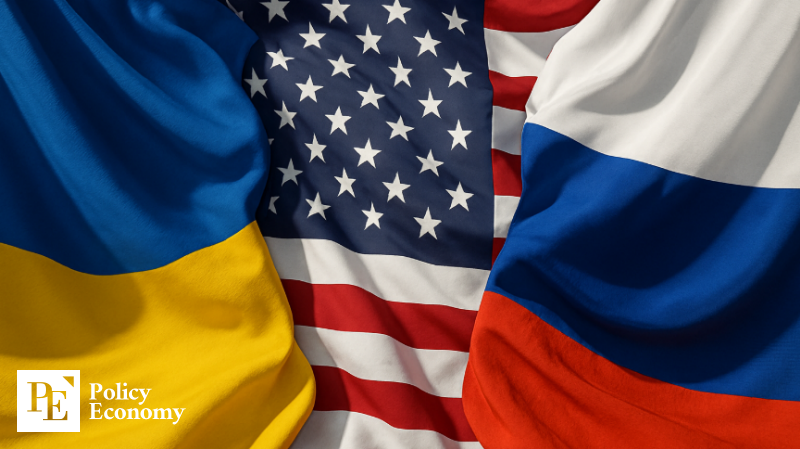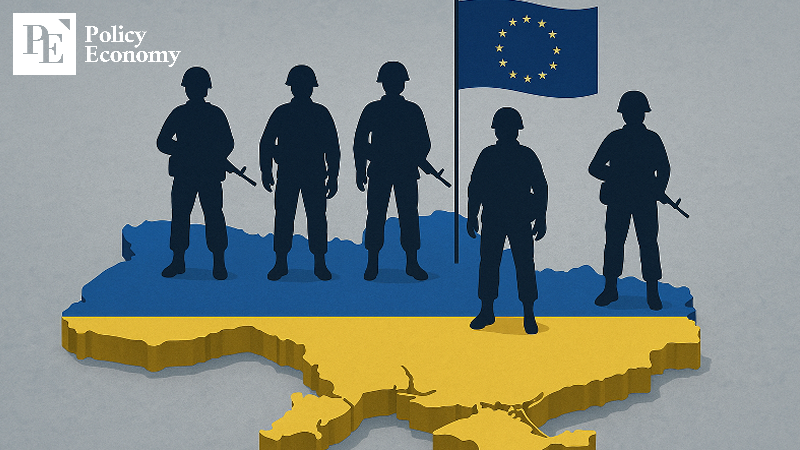Putin–Zelensky Talks Floated as U.S. Rules Out Ground Troops, Europe Weighs Deployment
Input
Modified
Trump Seeks Putin–Zelensky Bilateral Talks U.S., Europe, and Ukraine Form Tripartite Security Committee With U.S. Ruling Out Ground Troops, Could European Peacekeepers Take the Lead?

Reports suggest that Russian President Vladimir Putin and Ukrainian President Volodymyr Zelensky may hold a bilateral summit in Budapest, Hungary. U.S. President Donald Trump is said to be driving the mediation effort, giving new momentum to ceasefire talks. At the same time, Washington is working with European partners to advance discussions on providing security guarantees for Ukraine.
Putin–Zelensky Meeting in Budapest?
On August 19 (local time), the White House confirmed that President Donald Trump is pushing for a bilateral summit between Russian President Vladimir Putin and Ukrainian President Volodymyr Zelensky. Asked whether Putin had promised to meet Zelensky within weeks, White House spokesperson Karoline Leavitt responded, “He has.” The Kremlin, however, has not yet acknowledged the possibility of such talks.
The planned summit is the result of Trump’s direct mediation. In a previous interview with Fox News, he remarked, “I thought the two of them should meet first. If that goes well, I’ll step in for a trilateral meeting to close the deal.” According to reports, when a European leader suggested during a recent gathering that talks be held “in a month or two,” Trump replied, “In a month or two, 40,000 more people will be dead. It has to happen tonight,” before calling Putin directly.
Budapest, Hungary, has emerged as the likely venue, given Trump’s close ties with Hungarian Prime Minister Viktor Orbán. However, some outlets note that Orbán’s reputation as one of the EU’s most pro-Russian leaders could make the location uncomfortable for Zelensky. Leavitt declined to confirm or deny Budapest as the chosen site, saying only that she would not comment on the venue.
Western Moves Point to a Ceasefire Scenario
Alongside the push for a bilateral summit, Washington has formed a tripartite committee with Europe and Ukraine to address Kyiv’s security guarantees. The committee will be chaired by Acting U.S. Secretary of State and National Security Adviser Marco Rubio, with Ukrainian and European national security advisers also taking part. Its mandate is to design the framework for security guarantees—considered the linchpin of any peace settlement. A Ukrainian government official told Axios, “In the coming days, all committee members will be discussing security guarantees from morning to night. By the weekend, we expect a clear structure to emerge.”
Amid this focus, some experts believe the war could end with Ukraine ceding part of its territory to Russia. On August 15 in Alaska, President Putin told President Trump that if Ukraine withdrew from Donbas—including Donetsk, Luhansk, and parts of Rostov—Russia would freeze the front lines and refrain from further offensives. In return, Moscow offered to hand back 440 km² of occupied land in Sumy and Kharkiv, while demanding 6,600 km² of Donbas territory still under Ukrainian control. Since launching its invasion in 2022, Russia has already seized 75% of Donetsk and nearly all of Luhansk.
Moscow’s insistence on Donbas reflects its strategic value. Western Donetsk is fortified with Ukraine’s “fortress belt,” a chain of defensive positions anchored by towns and cities. If Ukraine surrenders Donetsk, Russia would be able to entrench itself across the entire fortress line, harness local defense industry infrastructure, and potentially restart the war from a far stronger position. This is why Ukraine is unlikely to yield Donetsk without firm Western security guarantees. Yet if such guarantees are provided, the ceasefire scenario outlined by Putin cannot be ruled out.

U.S.: “No American Troops in Ukraine”
The United States has ruled out deploying ground troops to Ukraine. In a Fox News interview on August 18, President Donald Trump stated, “Europe is willing to put troops on the ground when it comes to security. We are prepared to help from the air—and no country has that capability like we do.” White House spokesperson Karoline Leavitt echoed the point the same day, stressing, “As the president has made clear, U.S. forces will not be stationed in Ukraine. We may assist by coordinating with European allies or providing other forms of support for security guarantees.”
In Europe, French President Emmanuel Macron and U.K. Prime Minister Keir Starmer have floated proposals to send a multinational peacekeeping force to Ukraine. The New York Times also reported discussions about deploying a smaller-scale “tripwire force” rather than a full peacekeeping contingent. At the same time, European nations are pressing Washington to serve as a “backstop”—a term borrowed from baseball that refers to a safety net, here meaning a final security guarantee to protect European troops in case of escalation.
The key question now is whether Russia would accept the stationing of Western security forces in Ukraine. On August 18, Russian Foreign Ministry spokesperson Maria Zakharova reiterated Moscow’s stance, saying, “We categorically reject all scenarios involving the deployment of NATO forces in Ukraine. Such actions would escalate the conflict and lead to unpredictable consequences.”





















